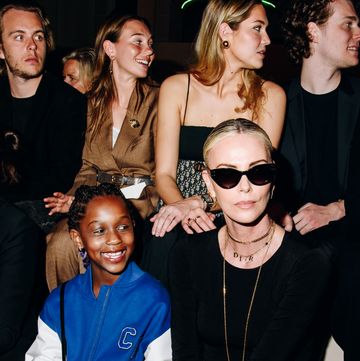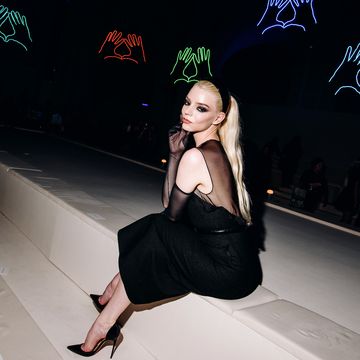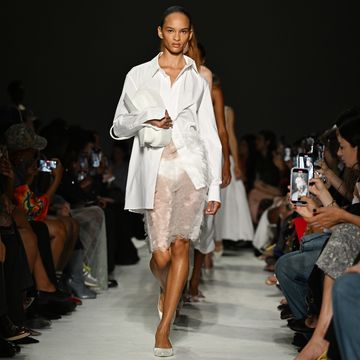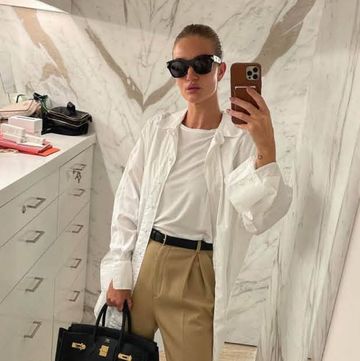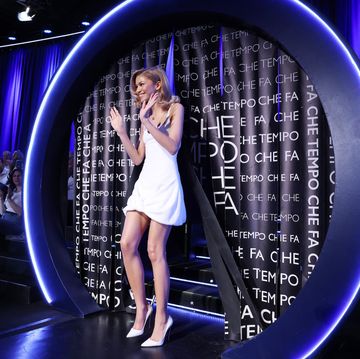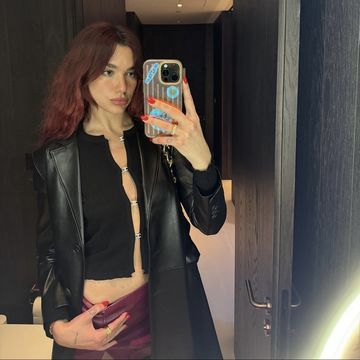On another planet, it doesnt matter where, a race of long lean women with straight white hair that falls to their knees and white paint on their faces appears to have built their own outfits - first with origami-like layers of scraps, then with larger slices of fabric, sometimes bundled at the chest or cascading down the legs. Finally, they appear in a pile up of jackets, coats and dresses, oddly stitched together to make one piece a sleeve protrudes from a chest, a skirt hangs from a shoulder, a coat swings from a hip. Oh, and on their heads they wear crowns from materials possibly found in a skip an old appliance here, a car radiator fan there.
Was this fabric folding a form of chaos theory? Was she making a comment about the need to recycle? Were those rag-tag black outfits in the middle that looked more like actual clothes - on models who stormed to the end of the runway, unlike their white-clothed sisters who serenely glided as if in slow motion an observation about women, their optimistic side at war with their darker thoughts?
Crushing, was the one-word answer. Rei Kawakubo makes scant effort to reveal her intentions. Its up to the audience and the industry - to make up its mind about what shes up to. An audience that might at first nudge each other and smile, before leaning forward in their seats gripped by a spell, a spell cast by a designer who offers something rare, completely and impervious to anything as obvious as a trend. By looking away from fashion, rejecting it, almost, Rei Kawakubo becomes its leader the diluting of her abstract thoughts come later in her other lines that will sit alongside these majestic pieces in her stores. And from there, other designers will no doubt follow.
Was she smiling when she made this collection? Not to poke fun at her audience Huh, theyll buy anything, this fashion lot but actually smiling with pleasure? Because it looked like a whole lot of fun to make. It remains to be seen if it will be a whole lot of fun to wear.


